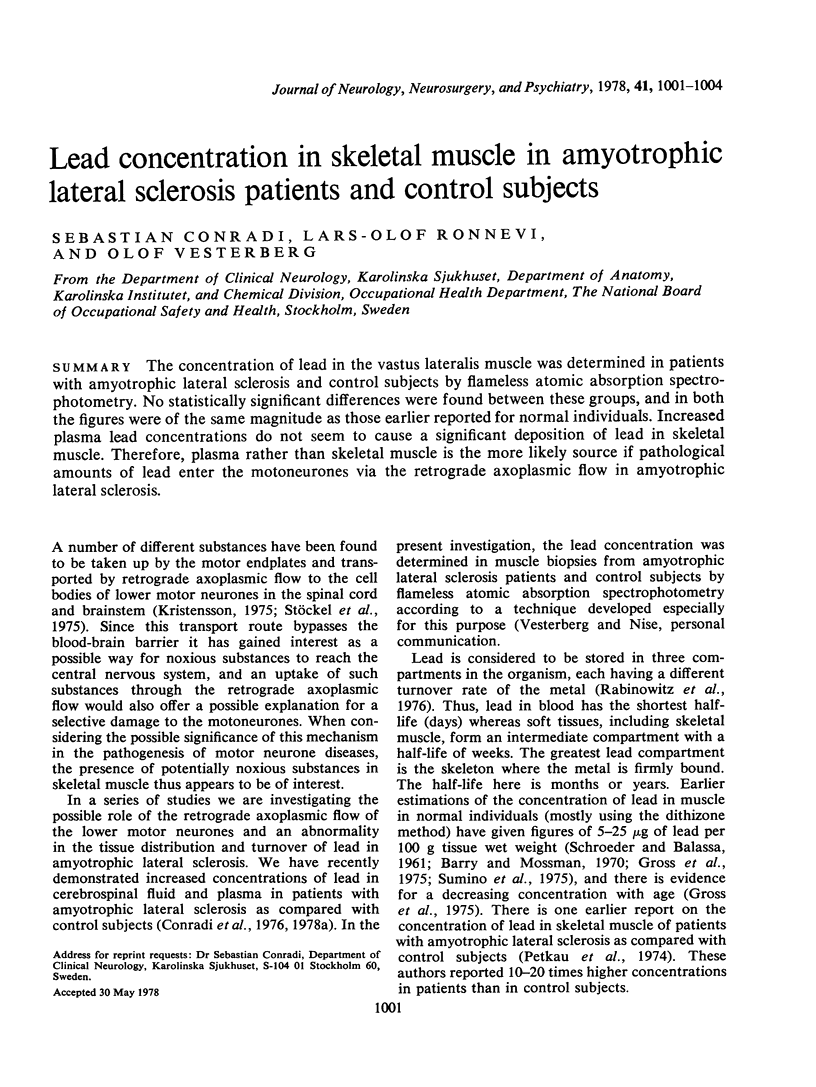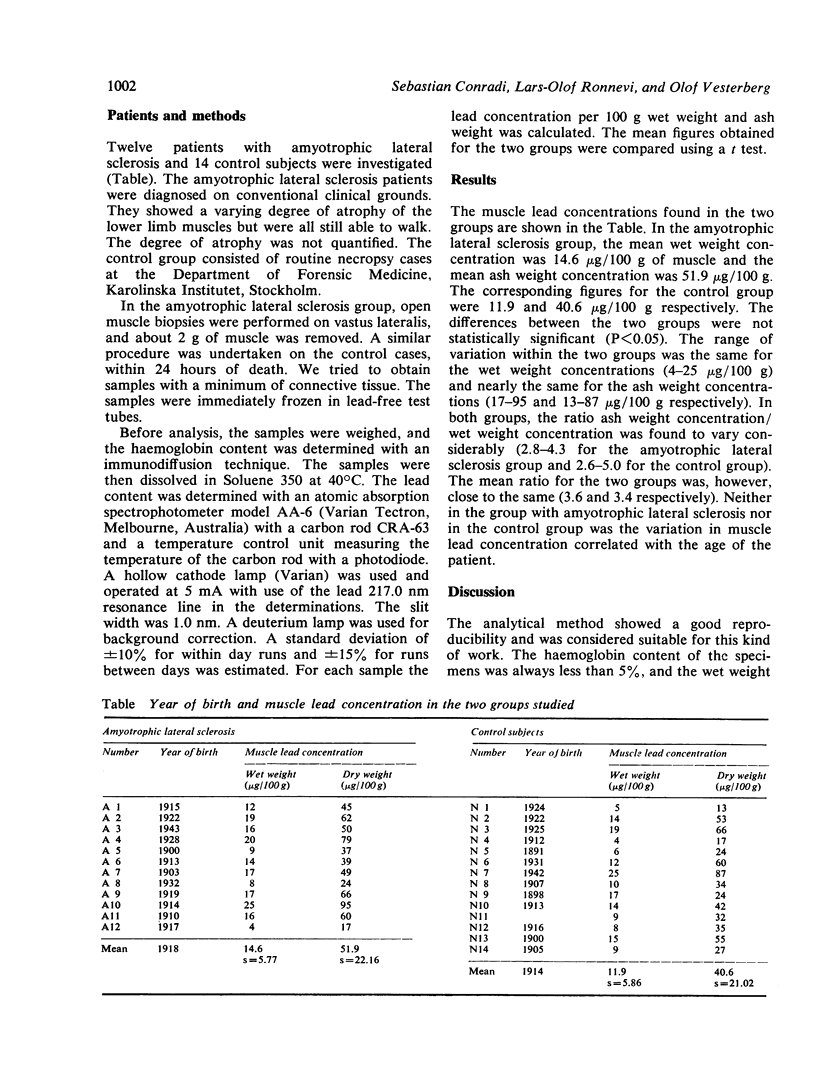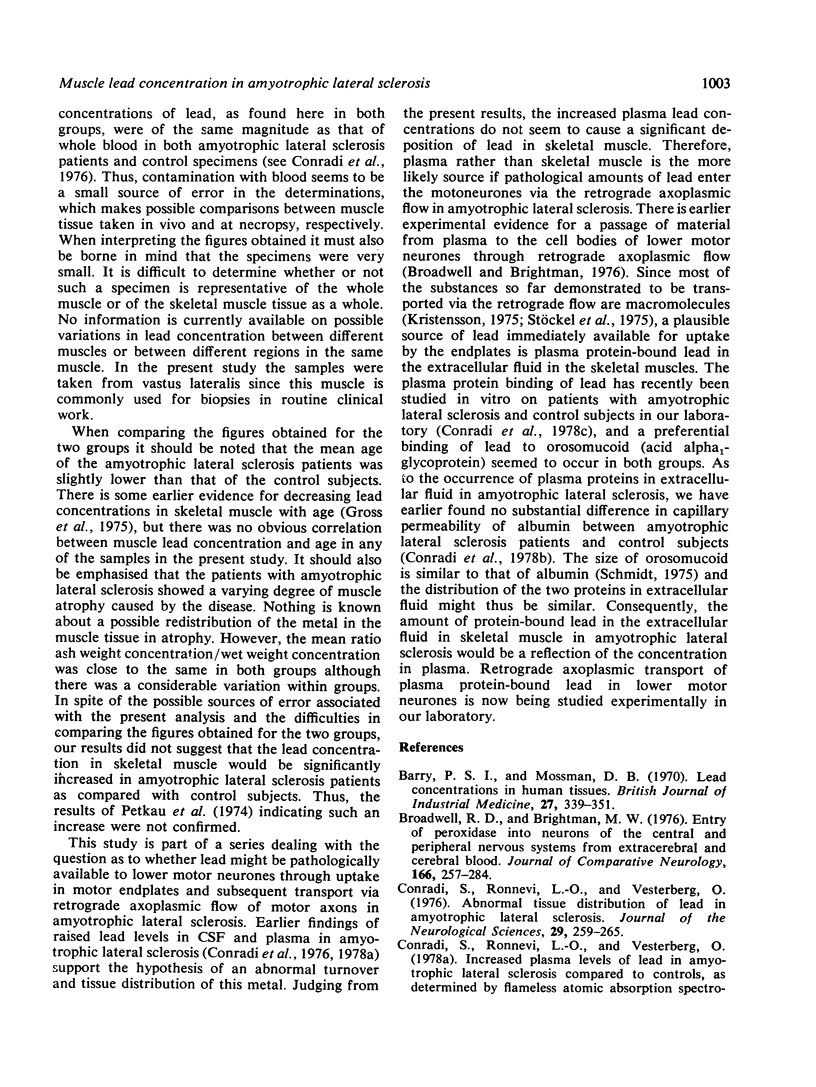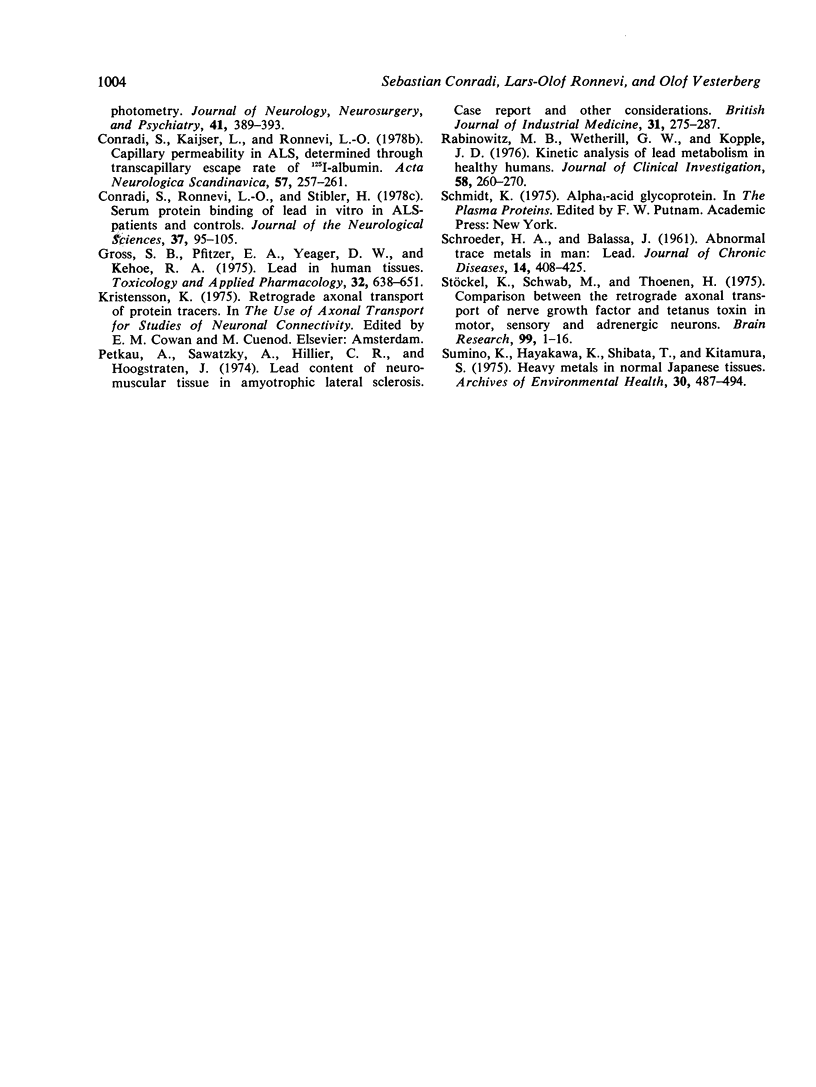Abstract
The concentration of lead in the vastus lateralis muscle was determined in patients with amyotrophic lateral sclerosis and control subjects by flameless atomic absorption spectrophotometry. No statistically significant differences were found between these groups, and in both the figures were of the same magnitude as those earlier reported for normal individuals. Increased plasma lead concentrations do not seem to cause a significant deposition of lead in skeletal muscle. Therefore, plasma rather than skeletal muscle is the more likely source if pathological amounts of lead enter the motoneurones via the retrograde axoplasmic flow in amyotrophic lateral sclerosis.
Full text
PDF



Selected References
These references are in PubMed. This may not be the complete list of references from this article.
- Barry P. S., Mossman D. B. Lead concentrations in human tissues. Br J Ind Med. 1970 Oct;27(4):339–351. doi: 10.1136/oem.27.4.339. [DOI] [PMC free article] [PubMed] [Google Scholar]
- Broadwell R. D., Brightman M. W. Entry of peroxidase into neurons of the central and peripheral nervous systems from extracerebral and cerebral blood. J Comp Neurol. 1976 Apr 1;166(3):257–283. doi: 10.1002/cne.901660302. [DOI] [PubMed] [Google Scholar]
- Conradi S., Kaijser L., Ronnevi L. O. Capillary permeability in ALS, determined through transcapillary escape rate of 125I-albumin. Acta Neurol Scand. 1978 Mar;57(3):257–261. doi: 10.1111/j.1600-0404.1978.tb05873.x. [DOI] [PubMed] [Google Scholar]
- Conradi S., Ronnevi L. O., Stibler H. Serum protein binding of lead in vitro in amyotrophic lateral sclerosis patients and controls. J Neurol Sci. 1978 Jun;37(1-2):95–105. doi: 10.1016/0022-510x(78)90230-7. [DOI] [PubMed] [Google Scholar]
- Conradi S., Ronnevi L. O., Vesterberg O. Abnormal tissue distribution of lead in amyotrophic lateral sclerosis. J Neurol Sci. 1976 Oct;29(2-4):259–265. doi: 10.1016/0022-510x(76)90175-1. [DOI] [PubMed] [Google Scholar]
- Gross S. B., Pfitzer E. A., Yeager D. W., Kehoe R. A. Lead in human tissues. Toxicol Appl Pharmacol. 1975 Jun;32(3):638–651. doi: 10.1016/0041-008x(75)90127-1. [DOI] [PubMed] [Google Scholar]
- Petkau A., Sawatzky A., Hillier C. R., Hoogstraten J. Lead content of neuromuscular tissue in amyotrophic lateral sclerosis: case report and other considerations. Br J Ind Med. 1974 Oct;31(4):275–287. doi: 10.1136/oem.31.4.275. [DOI] [PMC free article] [PubMed] [Google Scholar]
- Rabinowitz M. B., Wetherill G. W., Kopple J. D. Kinetic analysis of lead metabolism in healthy humans. J Clin Invest. 1976 Aug;58(2):260–270. doi: 10.1172/JCI108467. [DOI] [PMC free article] [PubMed] [Google Scholar]
- SCHROEDER H. A., BALASSA J. J. Abnormal trace metals in man: lead. J Chronic Dis. 1961 Oct;14:408–425. doi: 10.1016/0021-9681(61)90139-4. [DOI] [PubMed] [Google Scholar]
- Stöckel K., Schwab M., Thoenen H. Comparison between the retrograde axonal transport of nerve growth factor and tetanus toxin in motor, sensory and adrenergic neurons. Brain Res. 1975 Nov 28;99(1):1–16. doi: 10.1016/0006-8993(75)90604-6. [DOI] [PubMed] [Google Scholar]
- Sumino K., Hayakawa K., Shibata T., Kitamura S. Heavy metals in normal Japanese tissues. Amounts of 15 heavy metals in 30 subjects. Arch Environ Health. 1975 Oct;30(10):487–494. doi: 10.1080/00039896.1975.10666759. [DOI] [PubMed] [Google Scholar]


